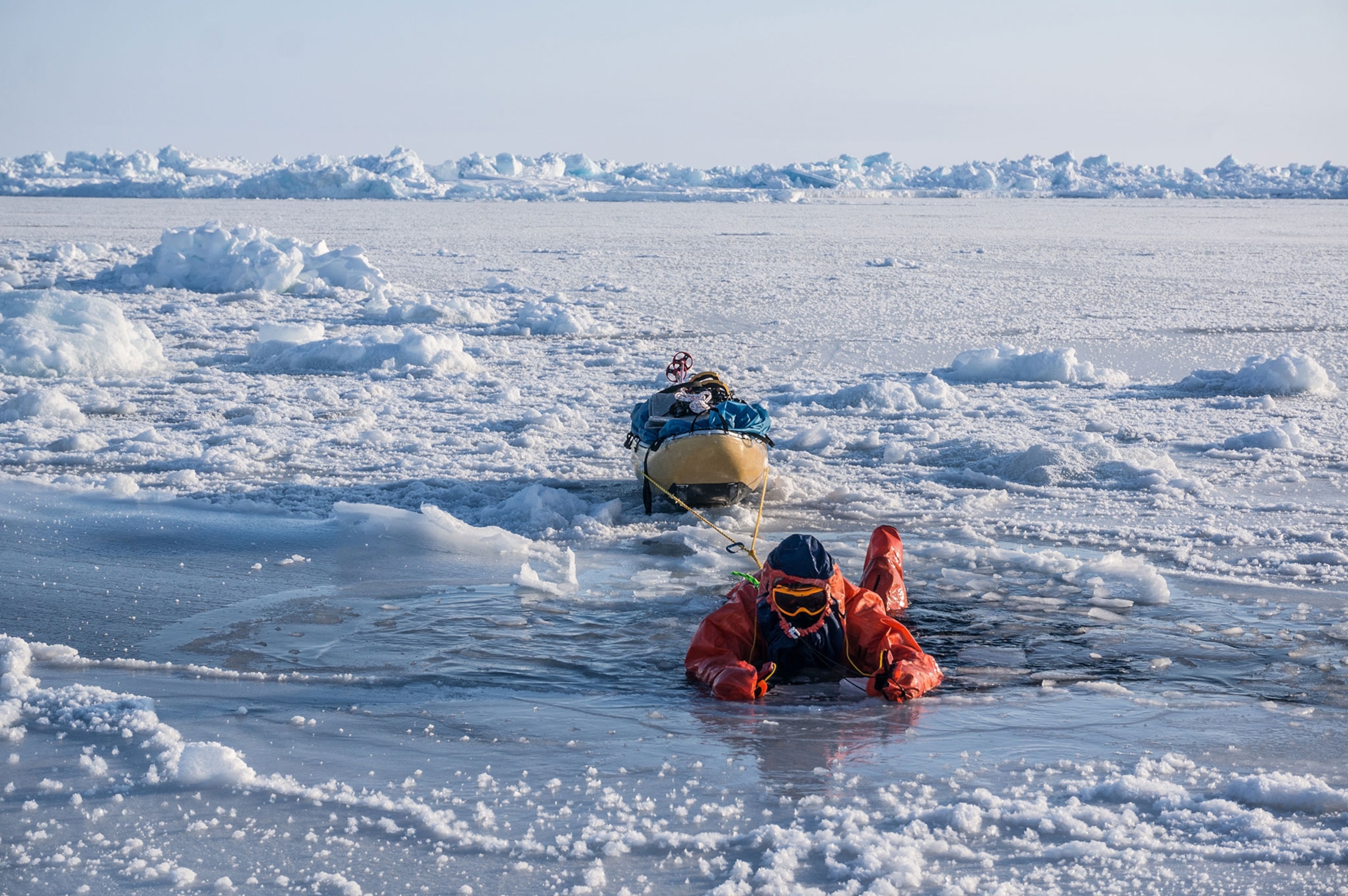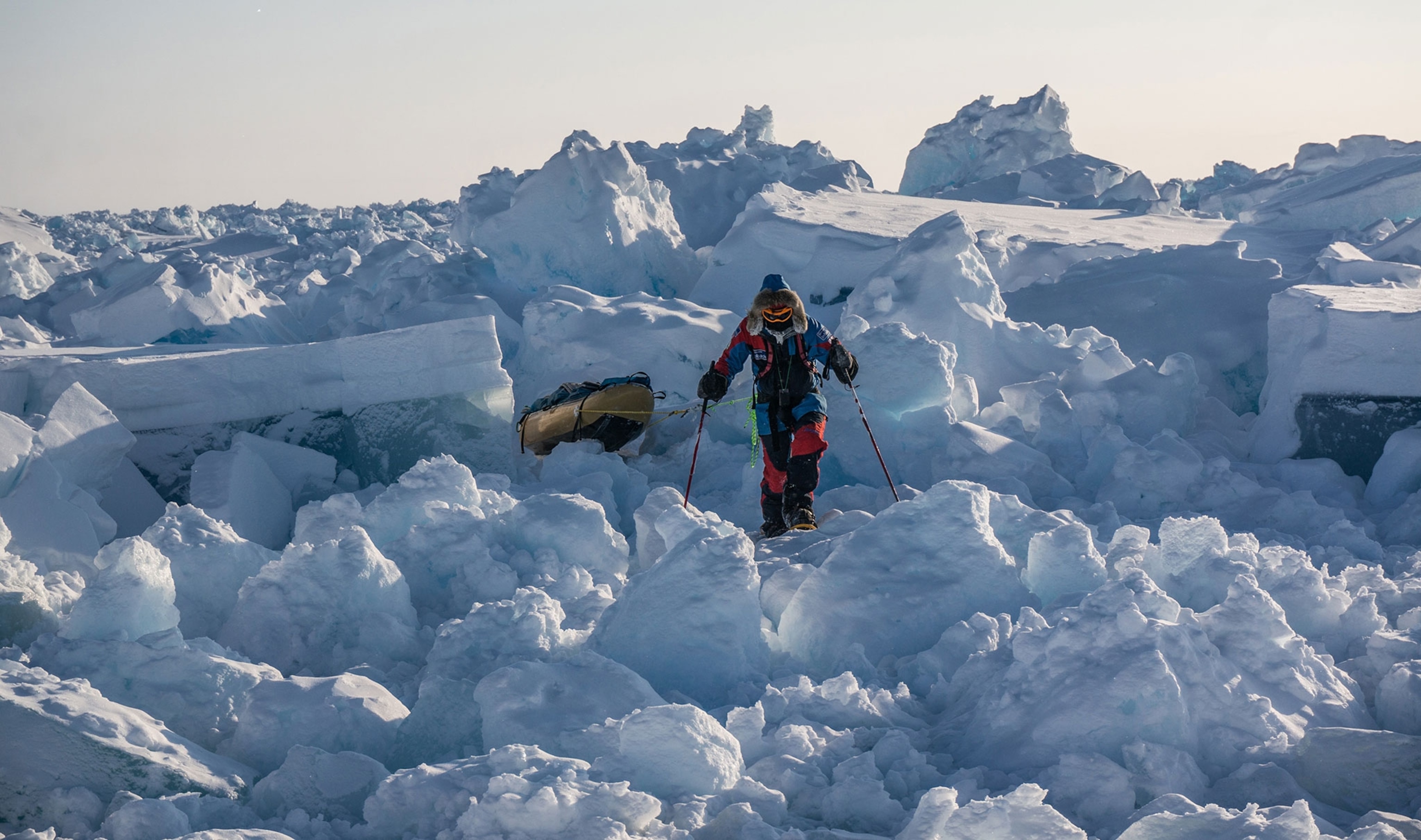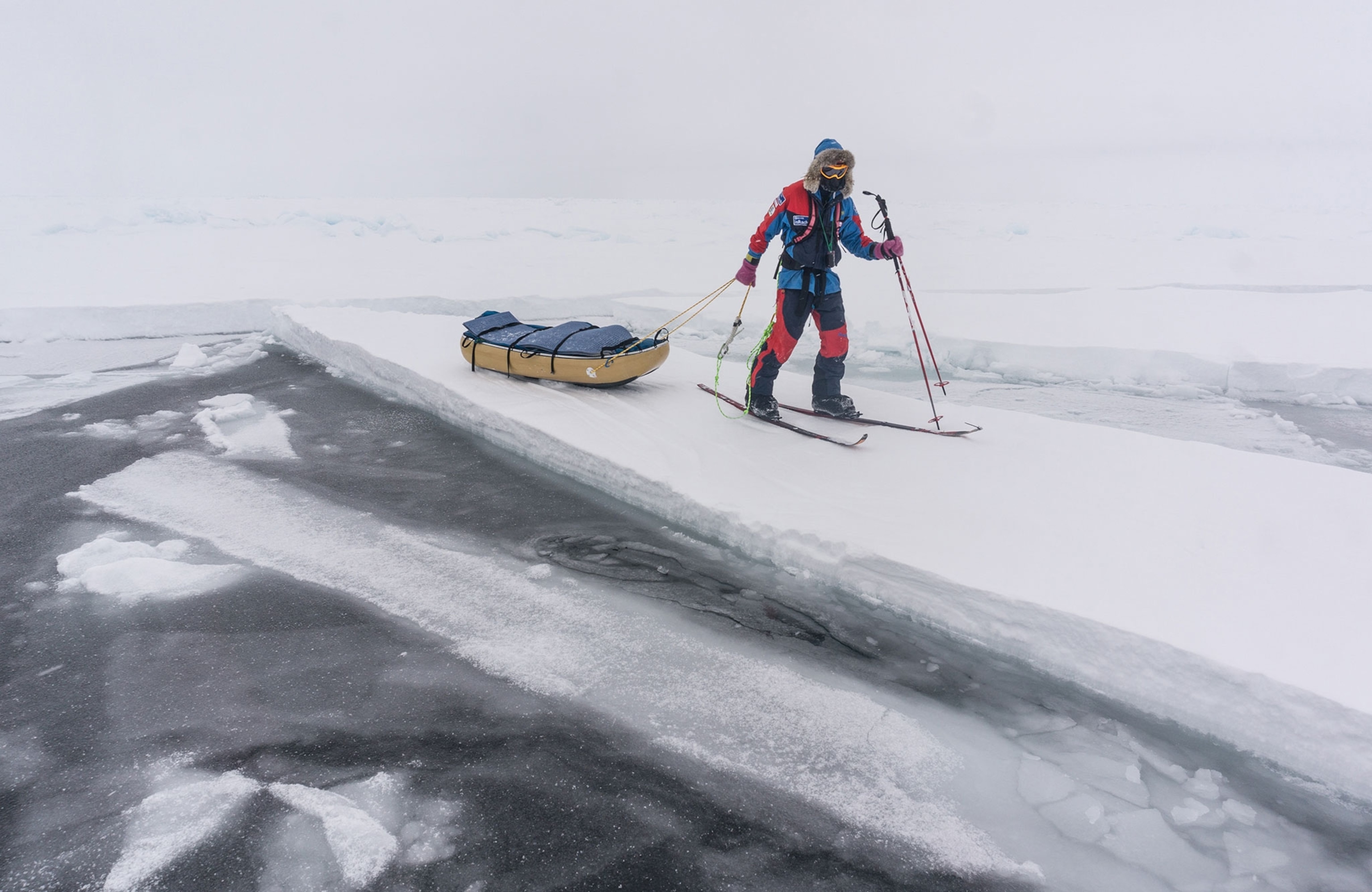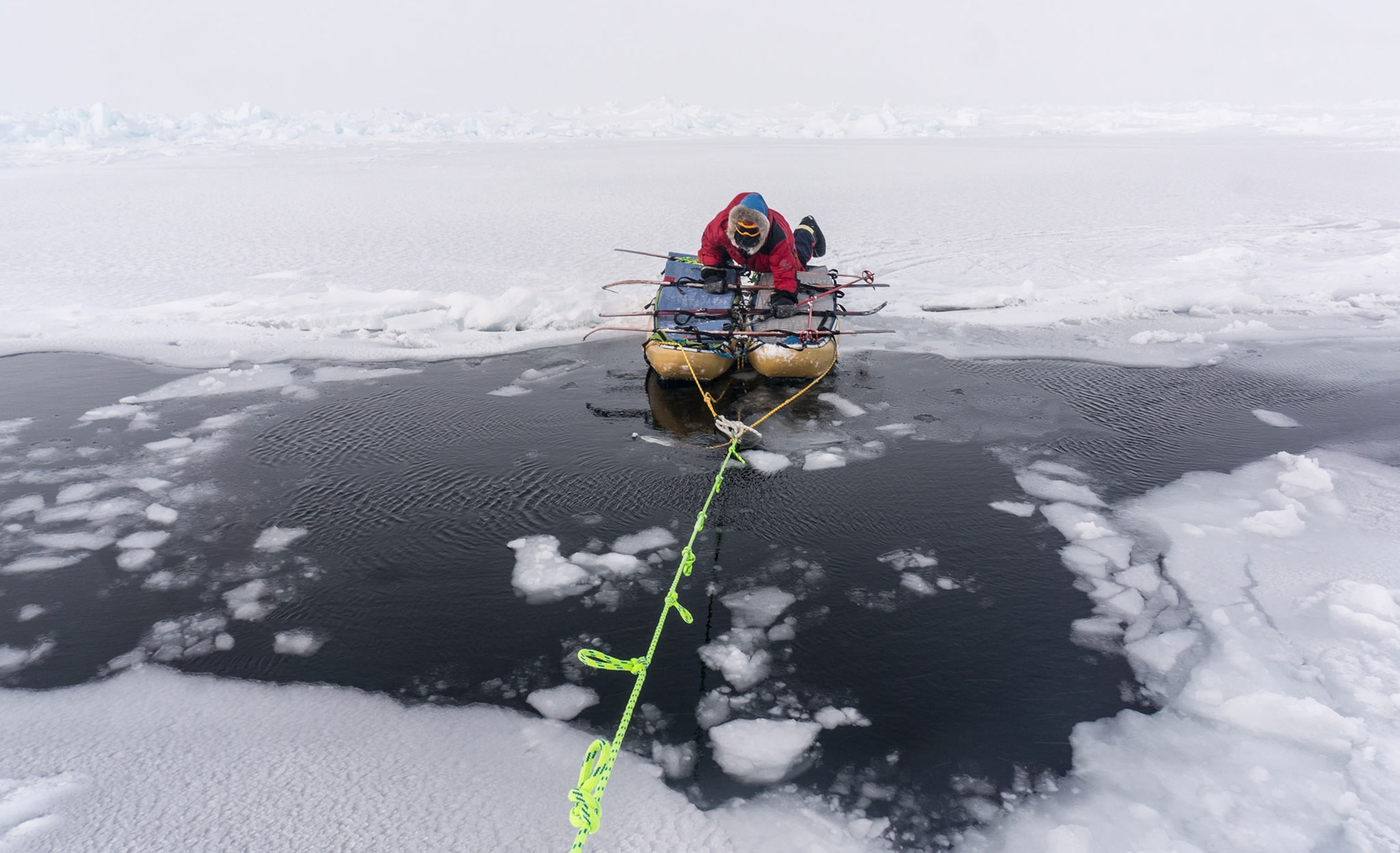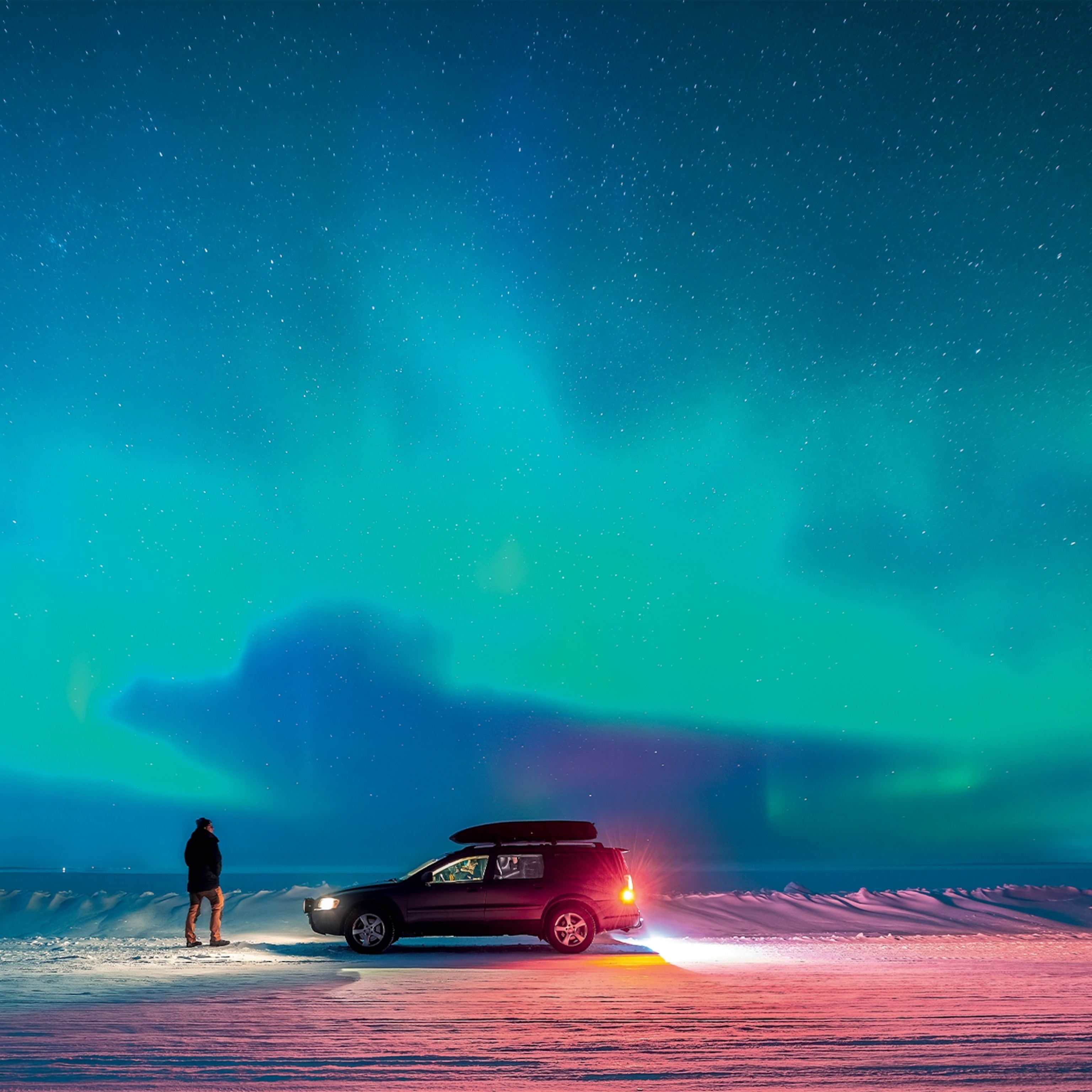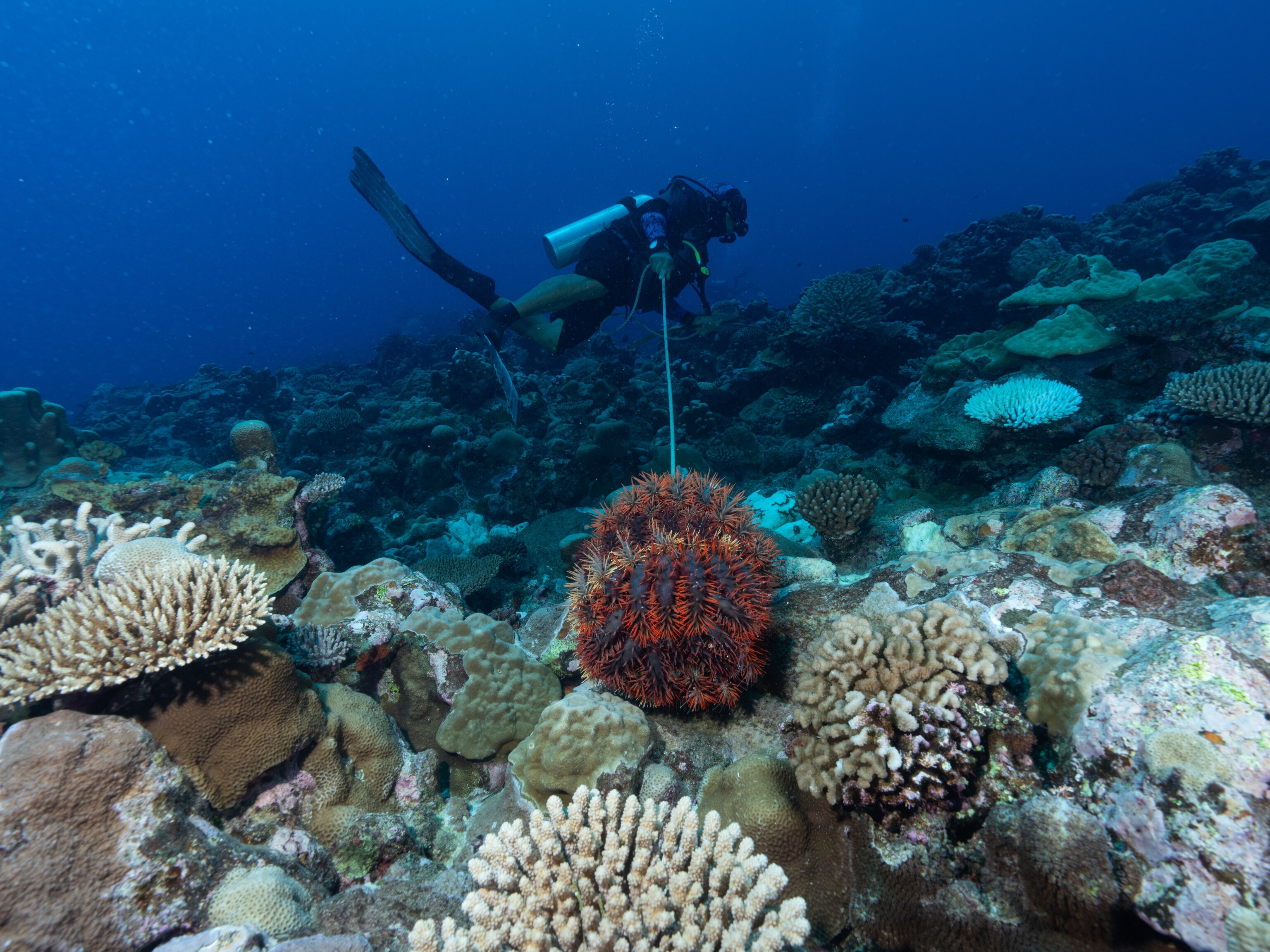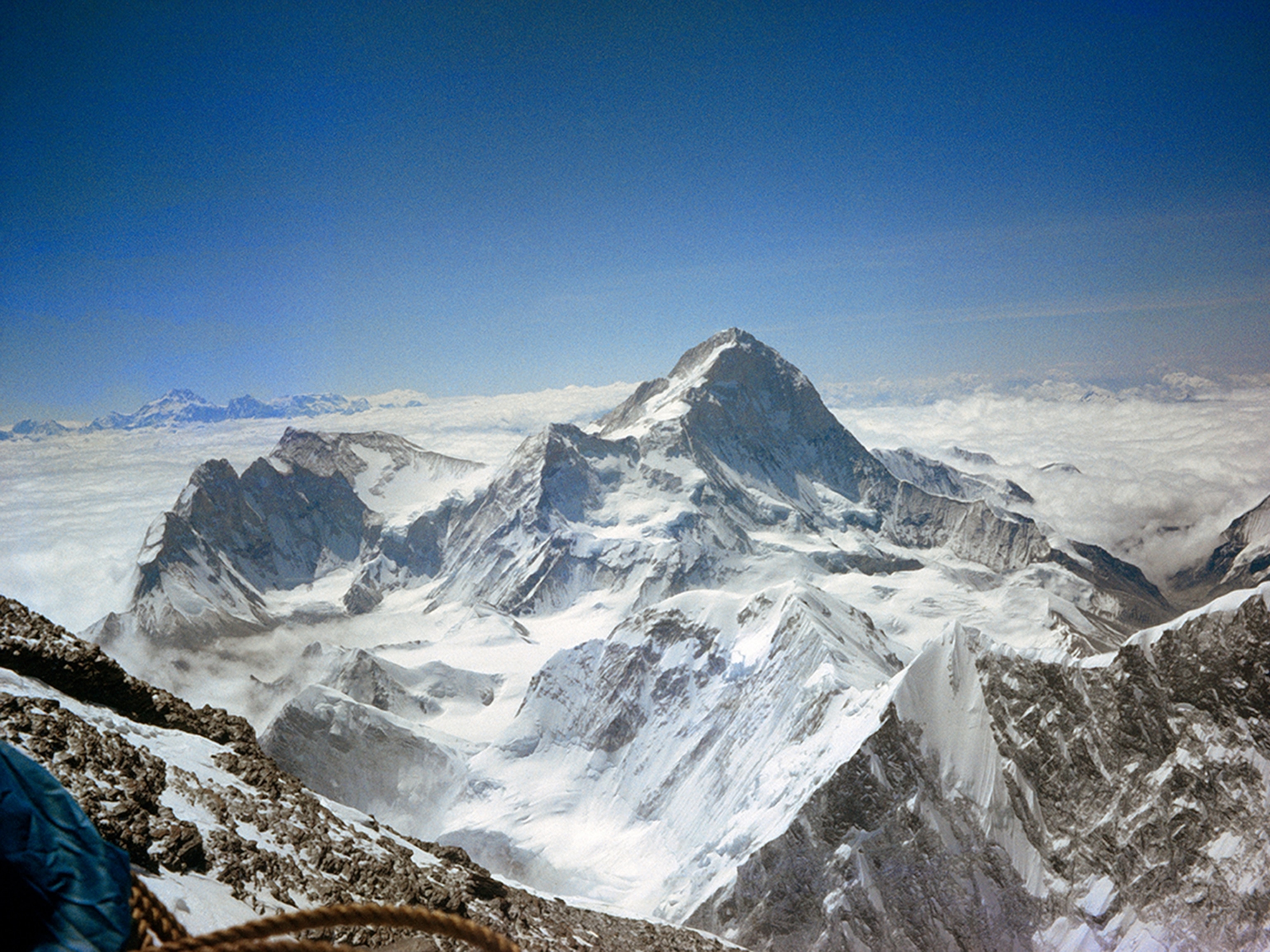Are North Pole Expeditions a Thing of the Past?
Disappearing Arctic sea ice is making polar travel nearly impossible, says author and adventurer Eric Larsen in his new book about what may have been the last trek to the pole.
Imagine doing the hardest thing you’ve ever done for 50 days straight. That’s what an expedition to the North Pole is like. And it’s even harder going there now than it was six years ago—take it from Eric Larsen, who has trekked to the top of the planet three times. And he might be the last person to complete the harrowing journey, which he recounts in his new book, On Thin Ice: An Epic Final Quest Into the Melting Arctic.
The Arctic is heating up, making polar travel nearly impossible. In 2014, Larsen and his partner, Ryan Waters, skied, walked, and swam 480 nautical miles from Cape Discovery on Canada’s Ellesmere Island to the North Pole, lugging all of their supplies with them on sleds. Cold clawed at their bones. Thin, rubbery ice bent under their skis and sometimes broke, dunking them in water that was so cold, it had reached subzero temperatures. Chaotic piles of ice made each mile painfully slow. At times, ice bobbed under their feet like cubes in a cocktail. It was an all-out sufferfest.
The book, which Larsen co-wrote with Hudson Lindenberger, tells the story in captivating detail. It’s a nail-biter from the opening sequence, where the two come face-to-face with a polar bear, to the closing pages, where they struggle to make the last 10 yards. Larsen hopes it will draw attention to the effects of climate change, which is taking place faster in the Arctic than anywhere else.
“The story of what is happening in the Arctic is really the story of what is happening to our planet,” he writes. “The difference in the quality of ice compared to my last expedition here [in 2010] was shocking.”
The Arctic Ocean is an interlocking jigsaw puzzle of ice that expands and contracts with the seasons. The North Pole isn’t a piece of land; it’s simply a geographical point that is often frozen.
This year the extent of Arctic sea ice has reached record-setting lows. In March 2016, the ice peaked at 5.6 million square miles, the lowest maximum extent on record (well below the 1981–2010 average). September’s low this year tied with 2007 for the record minimum extent, at 1.6 million square miles. (The 1981–2010 average was 2.4 million square miles.) Since satellite recordkeeping began in 1978, all 10 of the lowest lows have occurred since 2005. And October and November 2016 have seen record lows for this time of year.
“We’re going to continue to lose ice,” says Mark Serreze, director of the National Snow and Ice Data Center (NSIDC) in Boulder, Colorado, and a specialist in Arctic climate issues related to ice. “The question is, at some point do you not have enough ice to get up there to the North Pole?”
What affects expeditions isn’t just the extent of ice but the quality of it. Multiyear ice is thick and strong. Giant pressure ridges, where the ice has banged together and uplifted, are interspersed with big, flat pans that are easier to traverse. Newer ice is thin and unpredictable. It shifts constantly with currents and wind, causing open channels, called leads, and tedious rough ice.
An animation published by NASA shows how Arctic ice is diminishing, with younger, thinner ice taking the place of thick, multiyear ice. Serreze says this means the ice cover is becoming more mobile and dynamic—a nightmare for polar expeditions.
Larsen verifies this in his book: “It’s like someone pulled the plug, and all of the ice that was previously held together was now spreading apart.”
When Larsen and Waters were just 33 feet from the North Pole, the ice under their feet was drifting away from the pole faster than they could walk. So they ran. On May 6, 2014, they reached the North Pole, becoming the 46th and 47th people to complete such a trek unsupported. And they might be the last.
“To travel unsupported from land, the chances are so slim because of changing ice conditions and the fact that logistics are so much more difficult,” says Larsen.
And the more the ice melts, the more the ice melts.
As sea ice melts, its reflective surface is replaced with dark ocean water, which attracts more solar radiation. This generates heat, which melts even more ice. Simultaneously, the world’s oceans are warming, which also causes melting. This positive feedback loop makes the Arctic more sensitive to climate change than anywhere in the world.
“The loss of Arctic sea ice cover contributes to the pattern of warming through these feedback effects,” says Serreze. “You see this right now with something we call Arctic amplification. The strongest warming is in the Arctic right now, so it is an accentuating effect to climate change.”
Last winter, temperatures in the Arctic were 4 to 11 degrees Fahrenheit above average. A warming Arctic is the canary in the coal mine for global climate change, and most scientists say human behavior is largely to blame.
“The only thing that’s driven temperatures in the ocean, temperatures throughout the Arctic, temperatures throughout the Northern Hemisphere, snow coverage in the Northern Hemisphere, melting in Greenland—the only explanation for that is increased heat trapping from greenhouse gases, most of them produced by human beings. There’s just no other way around it,” says Ted Scambos, a lead scientist for the NSIDC.
A study by Dirk Notz and Julienne Stroeve published last month in the journal Science underscores this, demonstrating that Arctic sea-ice loss is directly related to increased levels of carbon dioxide in the atmosphere.
If anyone hopes to venture from land to the North Pole, starting from the North American side provides the best chance for success. Atmospheric circulation naturally pushes ice toward the Canadian coastline and northern Greenland, creating thicker ice in this region.
Sebastian Copeland, an award-winning photographer and polar explorer, is hoping to beat the odds next year. He has announced that in February 2017 he will attempt an unsupported trek from northern Canada, calling the expedition the Last Great March.
Copeland has the benefit of deep pockets that allow him to hire a private pilot to drop him off and pick him up. The go-to service for prior expeditions had been Kenn Borek Air, a small Calgary-based airline that announced after Larsen and Waters’s 2014 expedition that it would no longer support North Pole expeditions. Details on this decision are scant, and the airline declined to comment for this story.
- National Geographic Expeditions
The expedition window is also shrinking, since Arctic ice is starting to melt earlier in the year. Larsen took 53 days, averaging just 2.87 miles a day for the first three weeks. He and Waters finally made it the pole only after a final push, during which they minimized sleep and maximized movement, covering 26 miles in two days. Copeland is bringing food for 55 days, plus enough emergency rations for five days. Ice quality will be a determining factor in how fast he can travel.
But other than hoping for a better surface for polar expeditions, why should we care that Arctic ice is melting? Arctic warming can disrupt ocean circulation, which has global effects.
“There is potential for this sea-ice loss to affect things like middle-latitude weather patterns,” says Serreze. “You lose sea-ice cover, that fosters a strong warming in the Arctic, and that may affect weather patterns outside the Arctic.”
Increasing temperatures, more frequent floods and droughts, and extreme weather events are a few possible ramifications of losing the Arctic’s tempering effect on global temperatures. Potential domino effects include rising sea levels, coral die-off, changed wildlife habitat and migration patterns, and altered agricultural growing seasons.
And while we might want to point a finger at the Arctic for contributing to a warming world, the Arctic is merely responding to and accelerating what’s happening around the rest of the globe.
For Larsen and Copeland, expeditions have become a platform for raising global awareness of how the Arctic and global climate are changing. As Larsen says in his book, “The Arctic Ocean is no place for optimism.” He was referring to polar travel, but the same could be said for global warming.
Will Larsen be written into the history books as the last person to trek the North Pole? Or will Copeland? “If it’s not me, it’s him,” says Larsen.
Avery Stonich is a freelance writer based in Boulder, Colorado, who has traveled to more than 50 countries in search of adventure. Visit her website and follow her on Twitter and Instagram.
